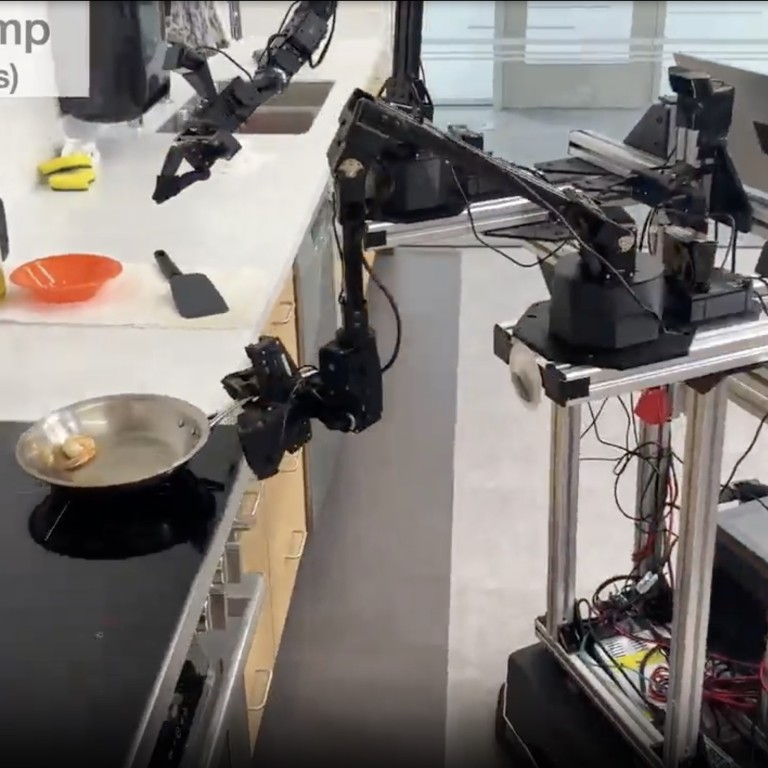
Stanford students win hearts in China with US$32,000 household robot that can cook shrimp and wash pans
- Mobile Aloha, a two-handed system, can be remotely controlled by a human user, or work autonomously through imitation learning
- It is able to cook shrimp, rinse a pan, lift a glass of wine and wipe spilled liquid beneath with a success rate of at least 80 per cent, the inventors say
A US$32,000 robot developed by a team at Stanford University has caught the attention of Chinese online users, after a video showing the two-handed robot cooking a three-course meal went viral.
Mobile Aloha, built by two computer-science PhD candidates from China, is a two-handed system that can be remotely controlled by a human user, or work autonomously through imitation learning.
After going through 50 human demonstrations and being co-trained on data sets, the machine is able to cook shrimp, rinse a pan, lift a glass of wine and wipe spilled liquid beneath – with a success rate of at least 80 per cent, according to the project’s website.
It took three months to develop the robot, according to Zipeng Fu, who co-leads the project with Tony Zhao, advised by Stanford assistant professor Chelsea Finn. Fu and Zhao are also student researchers at Google DeepMind, an artificial intelligence (AI) research laboratory.
Fu said they had to tackle both hardware and software challenges. To save cost, they assembled the machine on their own. The goal was to make a robot that could “complete complex home or office tasks that were not shown to be possible previously”.
The robot can walk at 1.42 metres per second, roughly equivalent to human speed, reach as high as 2 metres and extend one metre beyond its base, the team said.
When it comes to the software, the duo took a “data-driven AI approach using human demonstration data to teach the robot” instead of the traditional way of “tons of programming and manual tuning” that is not scalable, Fu said.
The robot cost US$32,000 to build, including on-board power and computing. Fu said he and Zhao, who have open-sourced the whole system, “don’t have any business plan at the moment”.
Global tech giants have been betting big on the sector. In 2021, American online retailer Amazon.com unveiled Astro, a nearly US$1,000 household robot designed for home monitoring. Japanese electronics giant Sony launched the latest generation of its Aibo robot dog in 2018, priced at around US$2,900.

